From Sun City to the stars: Future of aerospace is taking off from Borderland

SPACEPORT AMERICA, N.M. — On the way to space, the passenger sees few things — the delicate blue ring of Earth's atmosphere, the dense matte black void approaching and Elephant Butte Lake and the San Andres mountains of New Mexico off to the right.
These are the sights from a Virgin Galactic spaceship, which brings paying tourists to space from Spaceport American, just 100 miles from El Paso in the southern New Mexico desert. One hundred or so miles in the other direction, Jeff Bezos' Blue Origin launches its rockets from Van Horn, Texas.
The region surrounding El Paso is becoming a burgeoning aerospace network, of which space tourism is just a single, emerging node.
The Borderland has a rare combination of wide open spaces for experimental rockets, launch sites — such as Spaceport America and White Sands Missile Range, the "Birthplace of America's Missile and Space Activity" — and schools such as the University of Texas at El Paso, training the next generation of aerospace engineers.
"We can have a complete aerospace ecosystem," said Scott McLaughlin, the executive director of Spaceport America. "We can design, we can do basic research, we can develop, manufacture and test — and we can go to space."
The global aerospace industry is worth $447 billion now and, by some estimates, will be worth over a trillion dollars by 2030. But visions on how to corner part of the rapidly expanding aerospace market in the Borderland are still worlds apart.
Some, such as the New Mexico-based Space Valley Coalition, want to accelerate aerospace's commercial and entrepreneurial market. But groups like the UTEP-led Paso del Norte Innovation group are skeptical of a start-up heavy economic growth model, instead promoting advanced manufacturing and government collaboration.
The two groups are among the 16 national finalists for a $160 million federal grant to ensure "the U.S. remains globally competitive in key technology areas for decades to come." The winners of the grant are expected to be announced in November.
If either group wins, the region will be even better poised for economic and cultural redefinition in the coming years. But these differing visions of how to develop the aerospace ecosystem, as well as concerns over the accessibility of space travel, remain unresolved.
Nascent space tourism finds home in Borderland
Already, the elements of an aerospace ecosystem are coming together in the Borderland, and ambitions for the region are running high.
"We're hoping for a cultural change," said McLaughlin. "Imagine being able to watch a rocket take off literally an hour from your house."
Most of that hour drive is along a two-lane road from Las Cruces, New Mexico, dotted with potholes and cattle guards. Only the San Andres mountains are visible. Then, a few road signs — Milky Way, for one apt example — and guard booths appear. Spaceport America emerges out of the desert.
The isolation is intentional. Here, the sky is empty, the weather is calm and there's enough open space that debris would unlikely cause much damage to the ground below. Blue Origin takes off 30 miles down a two-lane road from Van Horn for similar reasons.
Uniquely, however, Spaceport America is located in the White Sands Missile Range's no-fly zone, where experimental launches are common and commercial air travel is generally forbidden.
"Because that is such a rare and unique thing," said McLaughlin, "both coalitions wanted to add it to their portfolio ... that is our driving force, to help all the entities in the area grow their aerospace ecosystem."
A spaceport had been under discussion in New Mexico since the 90s, said McLaughlin, and was finally completed in 2011 with over $220 million of public funds from the state of New Mexico and Doña Ana and Sierra counties. The aim was to develop commercial spaceflight and subsequently, a profitable aerospace subeconomy for the region.
Although Virgin Galactic spaceships have taken off periodically since 2020, true commercial space flight arrived only when it launched its first batch of civilians on Aug. 10, 2023, over a decade after Spaceport America was completed.
Once the company gets comfortable sending civilians to the edge of space, Virgin Galactic hopes to reach a launch cadence of 400 flights per year — more than one flight to space every day. So far, it has only achieved one launch a month, and only for the past three months.
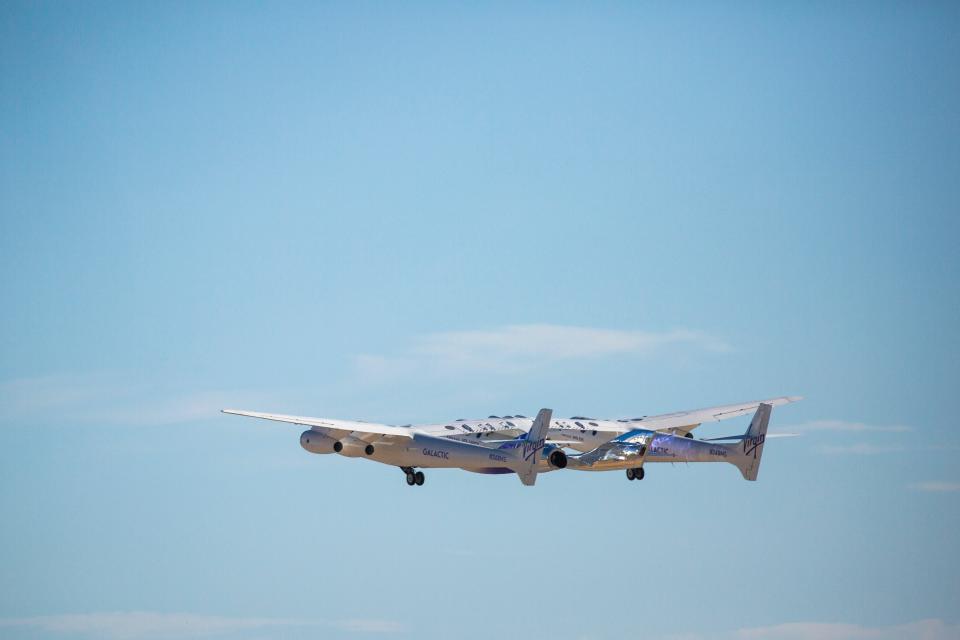
Is space reserved for lucky or rich?
Despite Virgin Galactic's hopes for space travel to become as accessible and democratic as taking an airplane, space remains far out of reach for most of the region's residents.
A ticket aboard a Virgin Galactic ship costs $450,000 for technically only three minutes in space. (The exact price of a flight on Blue Origin's New Shepherd rocket is undisclosed but also hovers in the six figures.)
For paying customers on their path to become astronauts, there's a dedicated lounge in the spaceport, well stocked with protein bars and sparkling water, custom-tailored black space suits and a leather-bound astronaut logbook to sign upon descending from space.
Richard Branson, the company's billionaire founder, is Astronaut 001. Customers are shuttled out to the spaceship in a fleet of Land Rovers, and their guests are treated to parfaits and matcha lattes on demand.

McLaughlin acknowledged that Spaceport America "has always received some criticism for our first customer … marketing to wealthy individuals."
"We understand that, and we can't entirely disagree with that criticism," he said. But he added that progress in new areas of technology — like the nascent internet and early automobiles — were often reserved for wealthy individuals who "pushed the envelope."
From this perspective, companies and entities such as Blue Origin, Virgin Galactic and Spaceport America are bringing "high-paying aerospace jobs that wouldn't exist otherwise," added McLaughlin, advancing the trajectory of aerospace development.
"They're not going to space," he said, "but they're building the aerospace ecosystem."
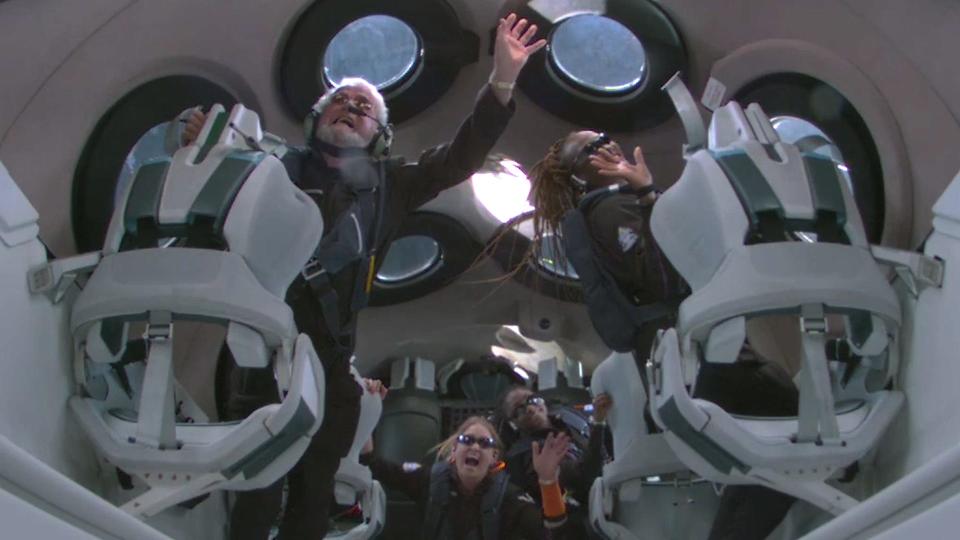
Space Valley faces 'second space race'
The future of space in the region goes far beyond space tourism, which accounts for "less than 1% of the space market today," said Randy Trask, president of the New Mexico Trade Alliance.
The New Mexico Trade Alliance is part of the Space Valley Coalition, a mix of private and public groups that want to unite America's diffuse commercial space industry into a fully-fledged aerospace ecosystem along the Rio Grande and build a "self-sustaining sector" with employment opportunities.
"We need the residents of Space Valley to understand the big picture," Trask said.
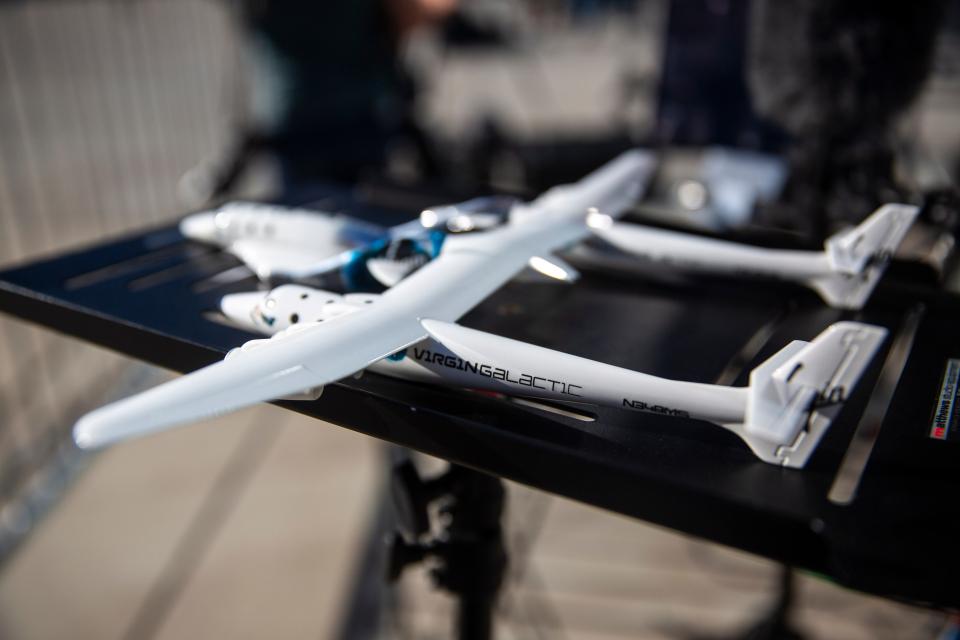
"We're almost in a second space race, militarily and commercially," Trask said, a race that is "going to be won by private sector innovation."
The Space Valley Coalition proposes an "acceleration of the commercial space market" as a boon for the Borderland, generating a regional culture of interdisciplinary collaboration while appealing to the nation's security needs.
Academics, researchers and manufacturers in the aerospace industry "work in silos," said Trask. The coalition wants to break down barriers by establishing an aerospace-friendly region like Space Valley.
Space Valley is also hoping to replicate Silicon Valley's entrepreneurial model. The coalition is building innovation facilities and supporting "starts-ups and small to mid-size companies from concept to product."
The stakes are high. Trask predicted the aerospace industry would be worth $3 trillion by 2040.
"Space will impact all sectors," Trask said. "It's not just rocket scientists who will get jobs."
UTEP aims to turn off the aerospace' talent vacuum' in El Paso
UTEP's Aerospace Center — the leader of Paso del Norte Innovation for Defense and Aerospace Engine, another of the 16 finalists for the grant — has that exact mission: to train rocket scientists for "for high-paying, in-demand careers."
"Over the last decade, the Aerospace Center has placed more than 800 of our graduates in high-paying careers in the aerospace and defense workforce including NASA, Lockheed Martin, and Blue Origin," its website reads.
But too often, students leave El Paso and seek employment elsewhere, where manufacturing, design and production jobs are more abundant, said Ahsan Choudhuri, associate vice president and founding director of the Aerospace Center.
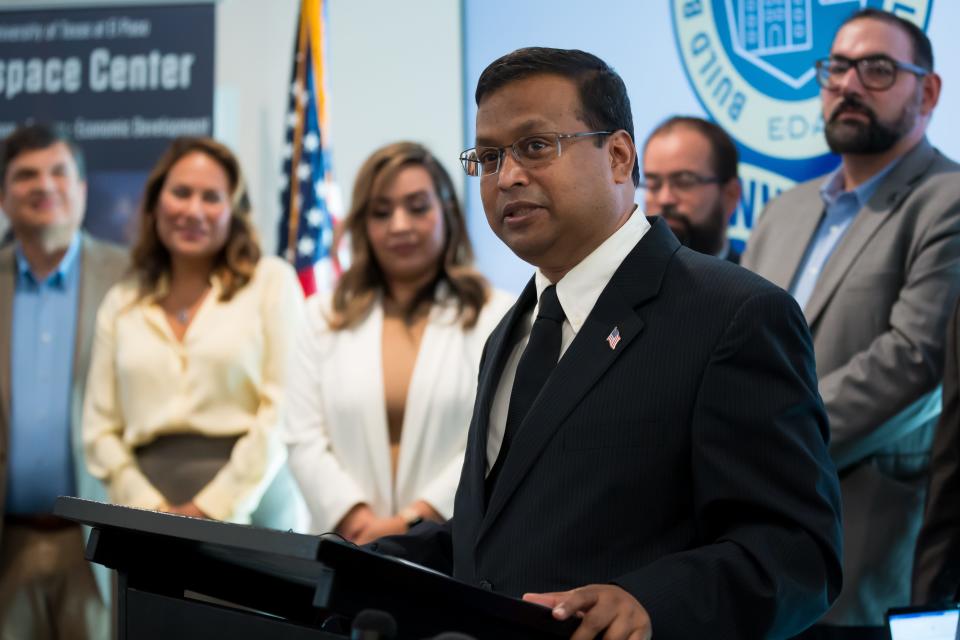
"This creates a huge talent vacuum in our community. If your young people leave your town, your economy gets really hammered," Choudhuri said. "That's what's happening to us."
Although Choudhuri is trained as an aerospace and mechanical engineer, his ambitions far transcend those of a typical academic. He speaks instead in terms of his duty to the El Paso community.
"Our sole purpose," he said, "is to take kids from El Paso zip codes and put them in the aerospace and defense industry."
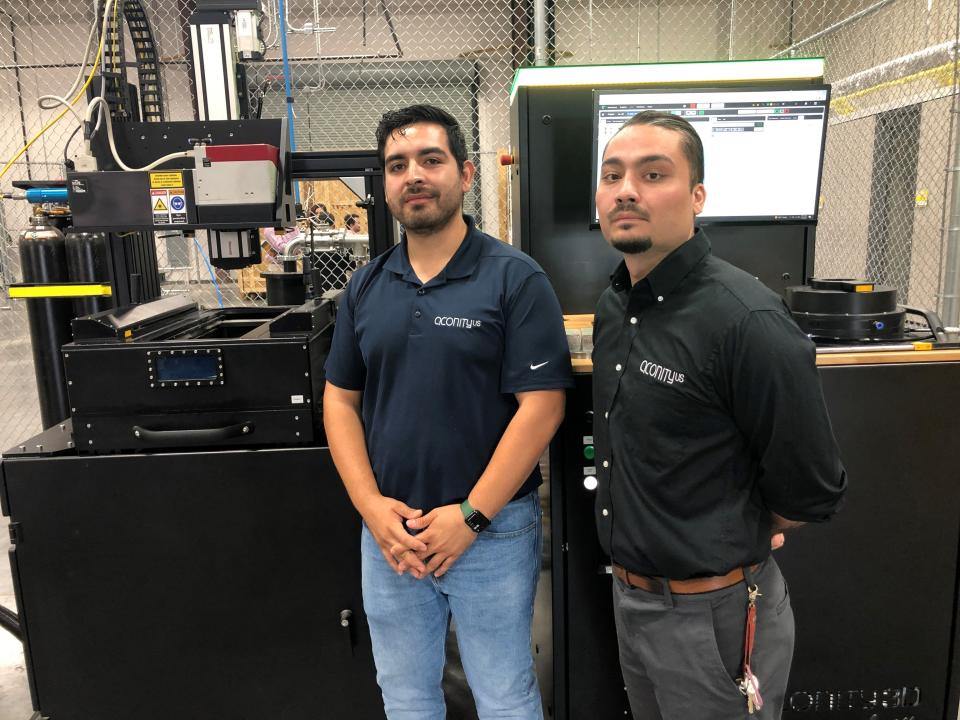
Choudhuri agreed that issues of local economy and national security can be addressed together by a robust aerospace manufacturing industry. However, he did not think that Space Valley's vision of "a culture of entrepreneurship" that Space Valley promotes is realistic for the region.
"Commercial space is not big enough. It's in infancy right now," Choudhuri said. "That's not a solution for me."
Reinventing the Paso del Norte region
The solution the Paso del Norte group envisions is to revive the region's small and medium manufacturing industry, appeal to national defense priorities and redefine El Paso as an aerospace manufacturing hub.
It aims to generate over a billion dollars in funding over the next 10 years, Choudhuri said — an ambitious sum to build an infrastructural base for aerospace firms to innovate and generate well-paid middle-class jobs.
"Our infrastructure includes physical infrastructure, digital infrastructure, talent infrastructure and innovation infrastructure," Choudhuri explained.
This model is exemplified by consolidated and efficient ecosystems such as Florida, which hosts the civilian space program, less traditional firms like SpaceX and aerospace manufacturers. The industry generates an estimated $11.2 billion in wages in the state.
But since "the civilian space program is minuscule" compared to the Department of Defense — whose monthly budget far outstrips NASA's for the entire year — "I have to tap into the massive [Department of Defense] funding," Choudhuri said.
"The two priorities — the national priority to build small and medium manufacturers to support our aerospace defense industrial base, and our original priority to build our manufacturing base — start to really converge," Choudhuri said.
This means pursuing federal grants with a strategy that emphasizes the region's contributions to national security, like the $40 million Build Back Better grant it won in 2022.
Part of the 2022 grant went towards developing the Advanced Manufacturing District, a 250-acre, city-led site near the El Paso International Airport, where businesses can collaborate with aerospace and defense researchers once development begins next year.
More: UTEP-led coalition wins $40M grant to grow aerospace, defense manufacturing in region
"The manufacturing that survives or thrives in the U.S. will not be because of cheaper labor," said Choudhuri. "It has to be advanced manufacturing."
For the $160 million federal grant, UTEP's Aerospace Center and the W.M. Keck Center for 3D Innovation are allied with El Paso city and county government, as well as the Rio Grande Council of Governments, the National Center for Defense Machining and Manufacturing, Workforce Solutions Borderplex, El Paso Community College and Spaceport America.
More: Innovation Factory opens at El Paso airport as part of UTEP-led manufacturing initiative
But, for Choudhuri, these grants are only the beginning of rebuilding the El Paso economy based on aerospace manufacturing. "$1.2 billion is nothing," he said. "Really, I have a bigger number in my mind that I don't talk about."
"El Paso has all the elements to be a national player. It's just that we never believed in ourselves," Choudhuri said. "Now we do."
This article originally appeared on El Paso Times: Space tourism, manufacturing poised to revitalize El Paso region

